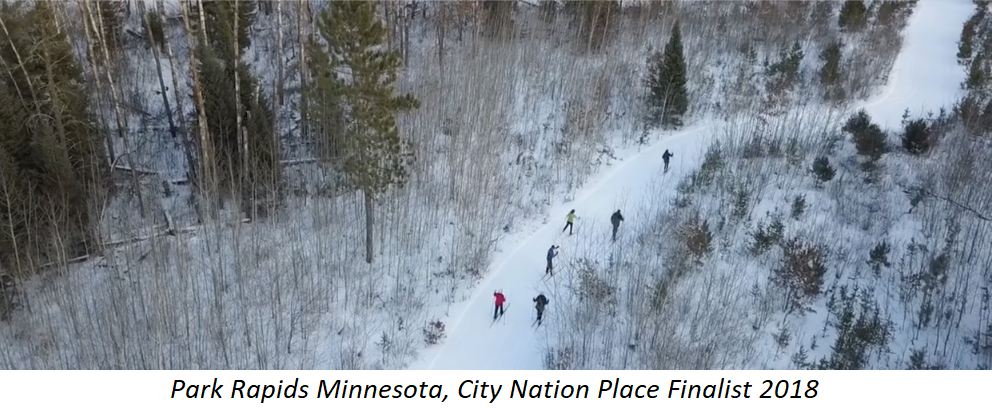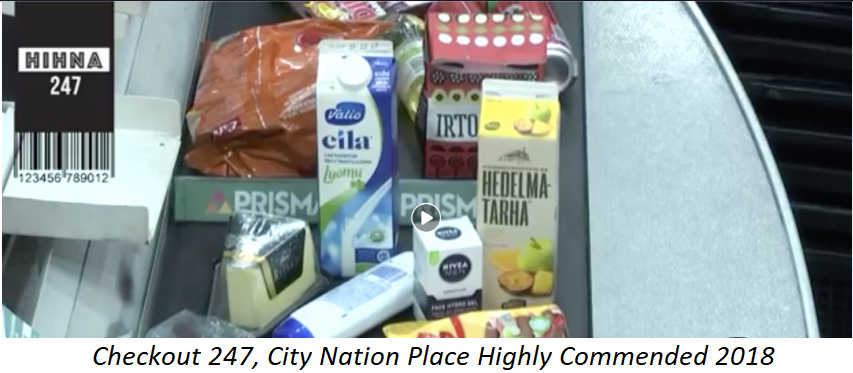Advocacy: the missing link in place branding?
It’s sometimes possible that, when you are convinced of the value of what your organisation is achieving, you neglect the task of helping others to share the same vision. At City Nation Place events we’ve often talked about engaging citizens, politicians, and the private sector in the process of place branding – working together to understand your place’s assets, creating a plan to grow and leverage your assets, and implementing that strategy with the consensus and contribution of all stakeholders. However, in our research for future agendas, a new word is appearing in the conversations we are having with place branding practitioners around the world: “advocacy”. There’s a growing recognition of the need to advocate for the beneficial impact of your place branding strategy – as Victor Hoskins, Director of Arlington Economic Development in Virginia USA [one of the winning places in the race to host the new headquarters for Amazon] commented, ironically it can be when you are most successful that you need to advocate the most.
A quick survey of recent news stories demonstrates that advocacy is required to support place branding strategy across destination marketing, investment promotion, economic development, and even place making.
Housing campaigner and journalist, Nye Jones, recently wrote in The Guardian [1] that “place making is tearing apart social housing communities,” before going on to directly equate place making with gentrification. Good place making is not about displacing people but about collaborating with communities to improve the quality of life for those who live there. In her response to the Guardian article [2], Jennifer S Vey of the Brooking Institution Bass Center for Transformative Placemaking argues that “we need to be far more bullish about advancing placemaking efforts that benefit existing residents and workers”.

We’ve been accustomed to stories of over-tourism and perhaps there’s a danger that mis-managed tourism will obfuscate the real benefits that tourism delivers to the economy, with a knock-on impact for those engaged in marketing destinations. Recently, Marketing Edinburgh has been splashed over the news as a budget cut of 89% across two years has been announced [3]. John Donnelly, CEO at Marketing Edinburgh responded to the draconian budget cuts in an open letter, asserting that “these cuts would damage the £72 million created by business tourism and the £16m delivered by the film economy.” He has been “overwhelmed” by support from numerous trade bodies and academics speaking out in defence of the organisation’s purpose – but if the political decision-makers and citizens remain unconvinced, this will be hollow encouragement.
On the other side of the pond, Kristian Sonnier, VP of Communications & Public Relations at New Orleans & Company has a similar problem - “We’re focussed on placing stories all over the world, and we’re good at that, but what we haven’t been focussed on is why travel to New Orleans is important…" In the face of increasing infrastructural needs, politicians in New Orleans are considering implementing tourism taxes to generate new revenue; taxes on tourism can obviously be a valuable source of funding for place branding teams, but they can also be counter-productive – achieving short-term financial gains at the expense of longer-term economic benefits. We’ll look at ways to fund place branding in a future blog – but for the purposes of this article, the New Orleans and Edinburgh examples suggest that there’s a need for a constant and strategic approach to advocacy, keeping citizens, politicians and private sector stakeholders on-side with the longer-term place branding vision.
Economic development teams are not immune to this challenge. The high-profile nature of the Amazon HQ2 bidding process in the USA has had a perhaps unsurprising impact. Whilst Long Island politicians and residents are left with mixed emotions following Amazon’s decision to pull out of development plans for the neighbourhood following vocal local opposition, Victor’s team in Arlington will now have to manage the process and the communication strategy around the Amazon development in their city very carefully [4].
Cat Leaver, Director at Brand Scotland sums up the advocacy challenge perfectly: “Being able to illustrate the effectiveness and return of the activity we do is critical, but it is also a long-term game. Awareness of nations and places and the changing narratives being projected take time to communicate, reinforce and bed in. So, we walk a fine line of managing expectations, maintaining momentum and evidencing immediate results.”
 So how can better advocacy and better communication strategies more successfully engage citizens and politicians in the place branding and marketing strategy? The most obvious first step is to involve key stakeholders from the beginning – on a smaller scale, the case study of Park Rapids Minnesota entered in to the 2018 City Nation Place Awards by Civic Brand provides a great example of the creative engagement of the citizens in the shaping of the place brand strategy [5]. The challenge then of course, is to keep everyone on side.
So how can better advocacy and better communication strategies more successfully engage citizens and politicians in the place branding and marketing strategy? The most obvious first step is to involve key stakeholders from the beginning – on a smaller scale, the case study of Park Rapids Minnesota entered in to the 2018 City Nation Place Awards by Civic Brand provides a great example of the creative engagement of the citizens in the shaping of the place brand strategy [5]. The challenge then of course, is to keep everyone on side.
Andrew Weir, Executive Vice President - Destination Development at Tourism Toronto, suggests that resident buy-in is often impacted by the tension between what residents are proud of and what motivates travel and investment. The stereotypical images that draw in travellers may be a story that the locals hate. As Andrew asks, “how much do you embrace or fight the stereotypes? How much do you lean into them and how much do you modernise?”.  Another City Nation Place Awards case study, winner in the citizen engagement category, provides an example of a communications strategy that directly involved the citizens – the Ministry for Foreign Affairs in Finland used “slow tv” to showcase real, everyday life in Finland through a supermarket checkout, in a celebration of the nation’s quirky and open sense of humour.
Another City Nation Place Awards case study, winner in the citizen engagement category, provides an example of a communications strategy that directly involved the citizens – the Ministry for Foreign Affairs in Finland used “slow tv” to showcase real, everyday life in Finland through a supermarket checkout, in a celebration of the nation’s quirky and open sense of humour.
Julie Curtin, President of Economic Development with consultants DCI, stresses the importance of ensuring that your own organisation’s leadership team is fully engaged in story-telling for your community: “Do the local and regional media see your leadership team as a go-to-source? Have you built up your personal brand to a degree that the story tellers of your own community find value in your opinion on topics related to place making, and to stories related to the economic vision for the city or region? Expanding the reach of that same soft-indicator, do organizations within your own state, province or country consider you a go-to source; and do industry associations approach you for insights and for opinions on heated topics?” You need to be at the forefront of debate in order to manage a better outcome.
Whilst Julie mentions soft indicators, there is of course the hard indicator of data. Measuring the impact of the place brand strategy is always going to be key, although the evidence from Edinburgh suggests that those positive facts about the contribution of tourism to economic development might not always hold sway – as Julie says, telling the story around the data effectively and on an ongoing basis is key. One of several organisations to specialise in providing measurement of the economic impact of place brand strategy is Tourism Economics – Adam Sacks, President of the organisation spoke at the 2018 City Nation Place Americas conference [7] in 2018 and the key learning he asked delegates to take away from his presentation was that the best case studies of successful return on place branding investment were, in his experience, where destination marketing organisations and economic development organisations were “working in sync”.
Given that City Nation Place is all about bringing leaders from every side of the place branding and marketing spectrum together, we would say this wouldn’t we, but perhaps the best solution to the advocacy challenge is for all those teams engaged in place branding - promoting tourism, attracting investment, driving economic development, attracting talent, and place making and planning - to not only work better together on strategy and implementation, but also to work more effectively together to tell the story of their vision and explain the value of what they are doing.
Authors:
Clare Dewhirst, Director, City Nation Place
Katie Parker, Content Manager, City Nation Place
Further reading:
[1] Nye Jones, The Guardian, “Placemaking displaces communities” https://www.theguardian.com/commentisfree/2018/dec/27/london-placemaking-social-housing-communities-tenants[2] Jennifer S Vey, Brooking Institution Bass Center for Transformative Placemaking, “Placemaking can empower local communities: https://www.brookings.edu/blog/the-avenue/2019/01/16/how-placemaking-can-empower-urban-communities-not-tear-them-apart/[3] The Drum, Scottish Creative Agencies Slam Marketing Edinburgh Budget Pull https://www.thedrum.com/news/2019/01/30/scottish-creative-agencies-slam-council-s-marketing-edinburgh-89-budget-rug-pull[4] City Nation Place Awards Finalist, Park Rapids Minnesota https://www.citynationplace.com/awards/park-rapids-minnesota-best-citizen-engagement-finalist[5] City Nation Place Awards Winner, Checkout 247 Finland https://dkf1ato8y5dsg.cloudfront.net/uploads/91/717/cnp-awards-2018-08.pdf[6] Adam Sacks, Tourism Economics at City Nation Place Americas https://www.citynationplace.com/americas/cr1-day-2-0910-a-sacks-v1








